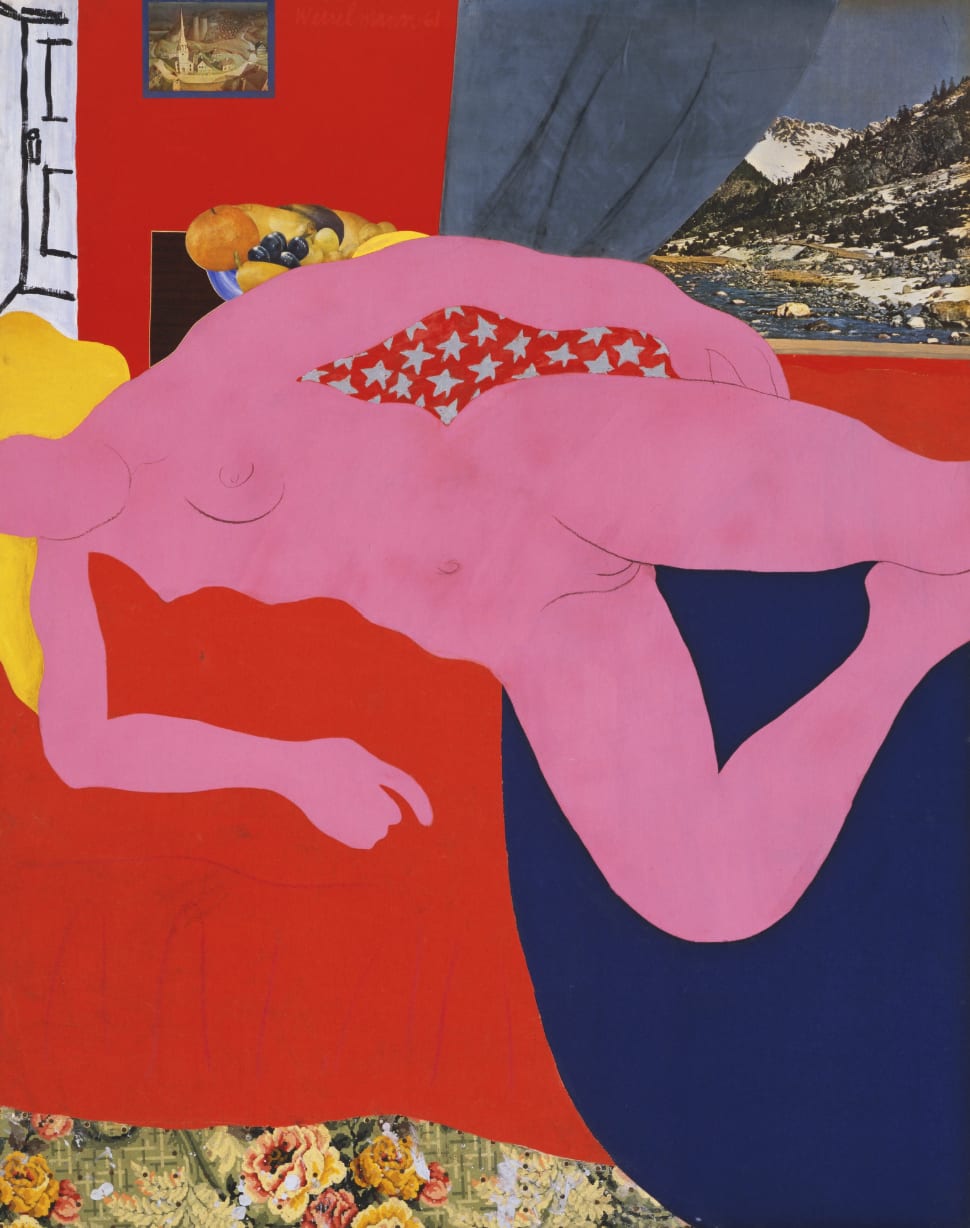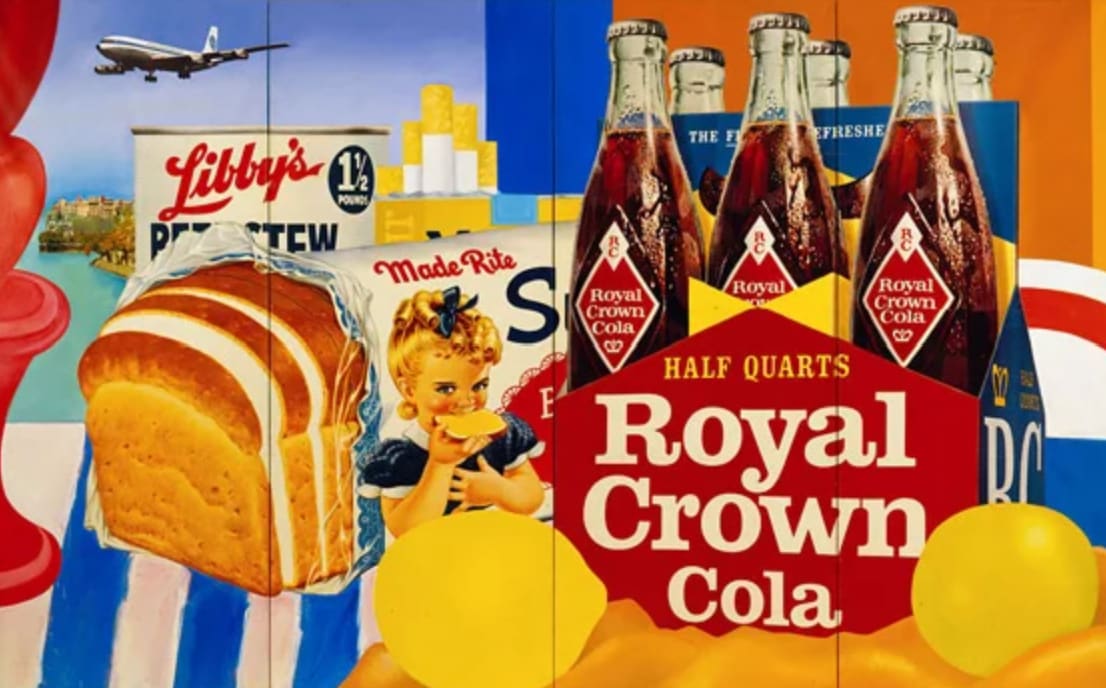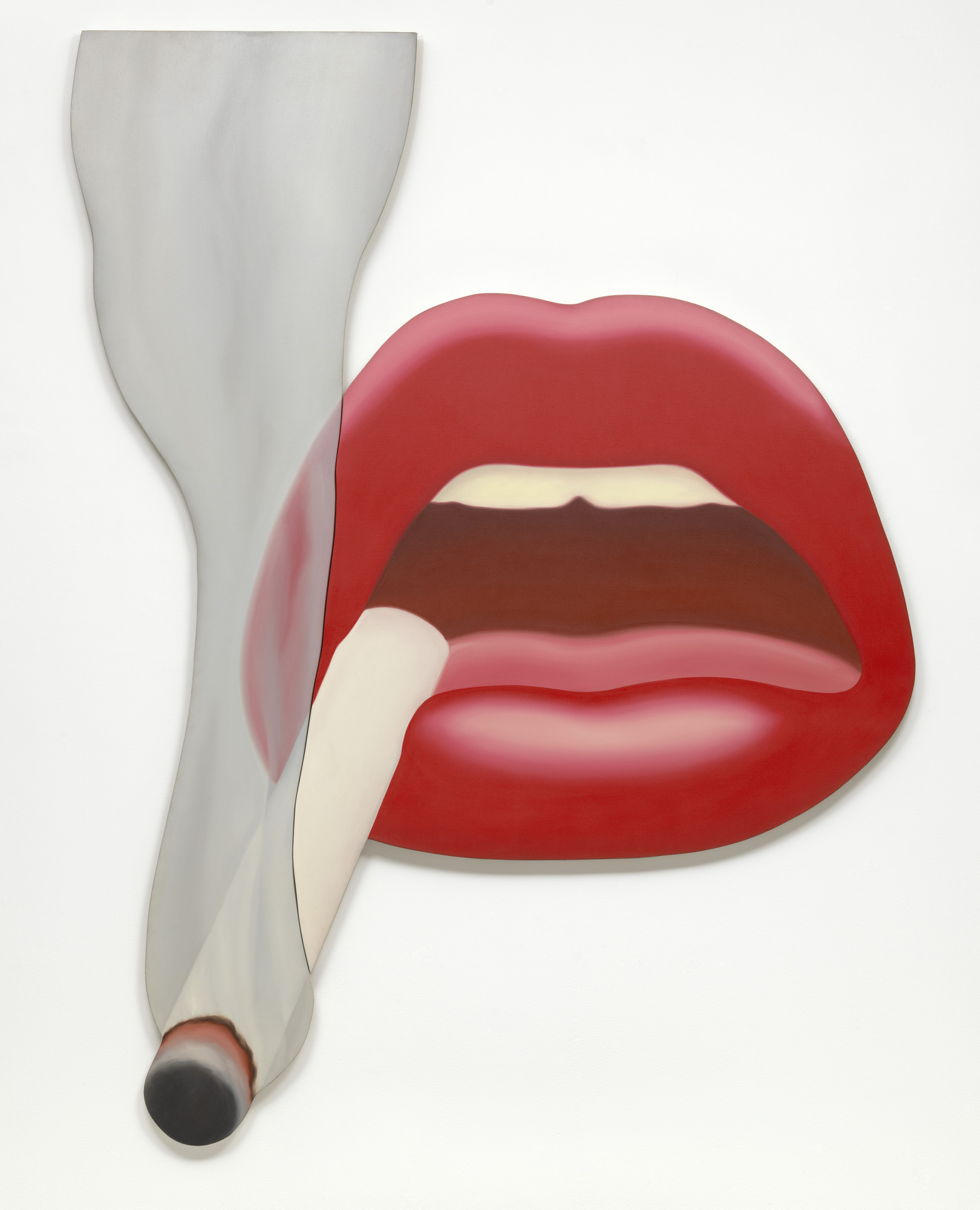What is Tom Wesselmann famous for?
Tom Wesselmann is widely considered to be one one of the most important and famous American Pop artists of the 1960s. Working alongside contemporaries including Andy Warhol and Roy Lichtenstein, Wesselman became famous for his pop-inspired representations of the nude, still life, and landscape and his bold use of everyday objects and advertising ephemera within his artworks.
When did Wesselmann begin his career?
Wesselmann began his career during his conscription with the US Army during the Korean War where he recounted and explored his experiences by drawing cartoons. After leaving the army, he pursued art studies at the Art Academy of Cincinnati and later at Cooper Union in New York, where he moved from cartooning to painting. Whilst studying, Wesselmann would teach art, and on occasions math, at a public school in Brooklyn. Wesselmann’s first glimpse of fame began with his first solo exhibition shortly after 1961 at the Tanager Gallery in New York. It is reported that even this early on in his career Wesselmann was being celebrated with fellow artist Jim Dine stating, before Wesselmann's first show in New York, "You may be one of America's great painters." It was his Great American Nude series which is considered to be his breakthrough works and brought him to fame and to the attention of the American public in the 1960s.
Why is Great American Nude considered important?
Wesselmann’s rise to fame was as a distinct result of this early series. Great American Nude is considered a pivotal series responsible for his fame because it represents his breakthrough into Pop Art and the wider public. The work is a prime example of the blending and reworking of the idea of the classic nude with everyday American imagery and consumer culture elements, incorporating patriotic colors like red, white, and blue, while referencing artistic masters like Matisse. Wesselmann was able to create a specifically American take on the nude framing and setting the classic subject through a uniquely American lens.
By giving a voice to pop-art, and by extension, American art, Wesselmann was able to announce the arrival of this new, bright and bold American movement and frame it within classic European movements and subject matters. The accessibility of Great American Nude - from its title to its subject - made Wesselmann famous as the artist created juxtaposition with everyday objects that were instantly identifiable as American further allowing the work to disperse amongst culture and society.

Famous Works of the 1960s
Throughout the 1960s, Wesselmann’s fame grew as did his artist output and his incorporation of various subject matter into his oeuvre. The 1960s were a bountiful time for the young artist and throughout the decade some of his most important and famous works were created. His 1963 work “Still Life” offers a snapshot both offers a unique perspective into American life whilst referencing classical European still lifes. However, gone are the traditional fruits that would adorn the painter’s canvas in favor of Soda Bottles, factory-made bread, cigarettes and canned stews. The mechanical modernity and nature of American life is distilled as cigarettes battle across the image as the view of a commercial jet soars through the background. These cheap, accessible goods communicate a democratic sense of affordability and familiarity in their everyday-ness and interplay of bold and heady branding and logos.. Produced in a factory, there is an almost meta referential take on the fantasy that these cheap processed goods will taste as good as they look as the artist plays with the notion of real-life and fantasy, of modernity and tradition in scintillating bursts of color and line.

Often considered Wesselmann’s other important work of the 1960s, Smoker, 1 (Mouth, 12) created in 19 65 shows a ruby red lipped mouth effortlessly allowing a lit cigarette to nonchalantly dangle loosely. Focusing on one part of the body, creates a sense of fetischis, that Wesselmann would return to throughout his career - in which a single body part, such as a foot or breast, is the primary focus of the composition.
Rather than showing a specific person or even copying an advertisement, the anonymous mouth works as a kind of fertility symbol for the modern age, and also as a kind of self-portrait. The disembodied mouth is undeniably Wesselmann, a kind of visual calling cue for the artist. In fact, Wesselmann's Mouth series almost certainly inspired one of the most iconic band logos of all time, The Rolling Stones cover for Sticky Fingers (designed in 1971 by the designer Ed Pasche, who would have been familiar with Wesselmann's work).

Wesselmann’s fame has continued to grow and his importance as one of the key figures of the pop-art movement cannot be understated. From his famous nudes to his landscapes and interiors, Wesselmann’s art continues to play an important role in our notion of society and art.
Discover Tom Wesselmann prints for sale at Guy Hepner and contact our team via info@guyhepner.com for further information on our latest availabilities or get in touch to sell your Wesselmann prints.

